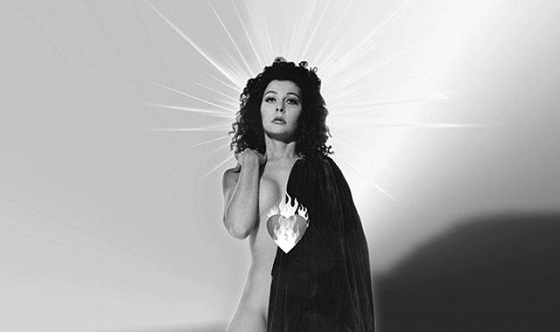
Very few of Andy Warhol's anointed "superstars" managed a long shelf-life. They simply were too wild, too beautiful, and too damned. There were the poor little rich girl Edie Sedgwick, the transgender icon Candy Darling, and the husky, glacial, heroin-swamped charm of Nico. All gone, along with a cavalcade of others; too soon and in the 20th century. Ultra Violet survived into this one, and originally arrived as a somebody already in the anybody everybody world of The Factory.
Often compared to Vivien Leigh, she was a striking beauty, a privileged French girl from a chateau via a host of reform schools. A muse to the surrealist eccentric Salvador Dali, she was also his muse, assistant, and confidante, although theirs was a decidedly platonic affair begun after she'd entranced him after delivering him a present in New York from a mutual friend. By the time she encountered Warhol, she was already a scene-stealer par excellence, someone from what Quentin Crisp often described as "the world of being."
Isabelle Collin De Fresne was christened Ultra Violet by Warhol, who reasoned quite rightly that her name wasn't easily pronounced and was difficult to remember. She recalled thinking that he was a woman on account of his effeminate whine and rather obvious wig. His choice of moniker related to her penchant for lipstick and eye shadow of that particular hue. She starred in several of his movies, appeared in Midnight Cowboy alongside Dustin Hoffman and John Voight, and was in a few low-budget affairs that are now viewed as cult classics, in particular Simon, King of the Witches. But her acting career was more decorative than method, and it petered out. She was a regular at the Silver Factory in the '60s and was quickly on the scene when Valerie Solanas shot Warhol. Indeed Ultra Violet was a self-proclaimed exhibitionist, desperate to be noticed, but a near-death experience in 1973 resulting from her hedonistic lifestyle rather subdued her limelight appearances. She flirted with religion, settling on Mormonism, with which she continued up to her death. An unlikely but not too surprising trajectory for a Warhol-Dali survivor.
However, she stepped back into public view in 1988 with her biography Famous for Fifteen Minutes: My Years with Andy Warhol, which made Ultra Violet the first to jump on the post-Andy bandwagon. Her book is entertaining, if rather shocking in the litany of names it drops rather gracelessly and from a great height. Everyone from Nixon to the Duke and Duchess of Windsor, from John Lennon to Bob Dylan, is featured. The flaw of the enterprise is the fact that she's slavishly gassy in her account, delivering names without much insight. It becomes more of a litany of being there, devoid of any real insight into what she was privy to witness. Her self-absorption delivered an abject lesson in how not to approach your past, and how to squander a perfect opportunity. It was also one she never bothered to revisit or revise.
The twilight of a muse can be at best erratic. I once saw her teamed with the rather bookish and serious novelist David Leavitt. He was promoting his new novel, Equal Affections, whilst she was touting her memoir. It was a chalk-and-cheese show. He seemed rather fazed by his literary companion for the evening, whilst she -- in an array of hats, impeccably attired, her glasses in a fish-shaped case -- was out to make an impression. This she was successful at, still strikingly beautiful and dotty in her early fifties. Indeed, all they had in common was that their books both dealt with aspects of gay America.
Ultra Violet continued to live in New York. An artist in her own right, she was also called upon to contribute to the continuing fascination with Warhol and his coterie. She experimented with neon and spiritual subjects, admitting, "I have infinite imagination. Maybe I don't have much technique." Unusual for one of her kind whose fame was relentlessly linked to her looks, she never resorted to a surgically enhanced appearance. She aged gracefully, having once reflected of her transcending a time many didn't emerge from, "I survived by grace alone."
Ultra Violet's "Luminous Self Portrait" (2012), a digital photographic print utilizing a Philippe Halsman photograph, courtesy the artist and Culture Shock, New York.
